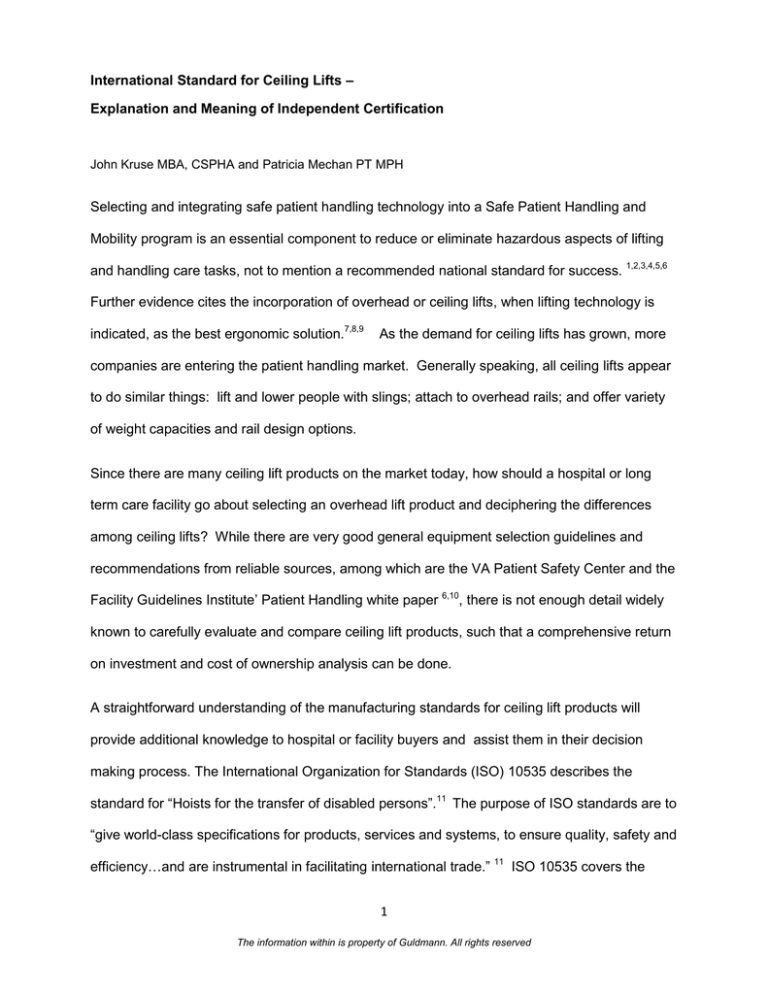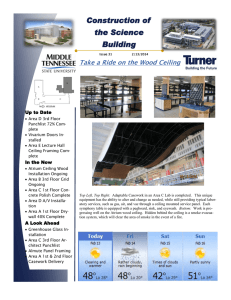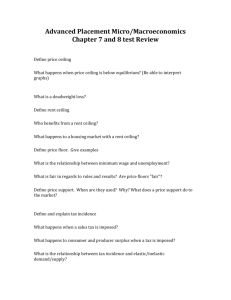
International Standard for Ceiling Lifts –
Explanation and Meaning of Independent Certification
John Kruse MBA, CSPHA and Patricia Mechan PT MPH
Selecting and integrating safe patient handling technology into a Safe Patient Handling and
Mobility program is an essential component to reduce or eliminate hazardous aspects of lifting
and handling care tasks, not to mention a recommended national standard for success. 1,2,3,4,5,6
Further evidence cites the incorporation of overhead or ceiling lifts, when lifting technology is
indicated, as the best ergonomic solution.7,8,9
As the demand for ceiling lifts has grown, more
companies are entering the patient handling market. Generally speaking, all ceiling lifts appear
to do similar things: lift and lower people with slings; attach to overhead rails; and offer variety
of weight capacities and rail design options.
Since there are many ceiling lift products on the market today, how should a hospital or long
term care facility go about selecting an overhead lift product and deciphering the differences
among ceiling lifts? While there are very good general equipment selection guidelines and
recommendations from reliable sources, among which are the VA Patient Safety Center and the
Facility Guidelines Institute’ Patient Handling white paper 6,10, there is not enough detail widely
known to carefully evaluate and compare ceiling lift products, such that a comprehensive return
on investment and cost of ownership analysis can be done.
A straightforward understanding of the manufacturing standards for ceiling lift products will
provide additional knowledge to hospital or facility buyers and assist them in their decision
making process. The International Organization for Standards (ISO) 10535 describes the
standard for “Hoists for the transfer of disabled persons”.11 The purpose of ISO standards are to
“give world-class specifications for products, services and systems, to ensure quality, safety and
efficiency…and are instrumental in facilitating international trade.” 11 ISO 10535 covers the
1
The information within is property of Guldmann. All rights reserved
international standards for mobile hoists, standing or raising hoists, stationary hoists (fixed to
walls, floor, ceiling or mounted in or on another product), stationary free standing hoists, nonrigid body-support units, rigid body support units, and bathtub hoists.
ISO 10535’s standards11 governing ceiling lifts includes, but are not limited to:
the expectations for the manufacturing environment (e.g. factory) and processes (e.g.
production methods) by which the hoists (lifts) are produced
the functions included in the lift (e.g. emergency stop)
the expectations for installation (e.g. installed rails’ security tested for 1.5 times greater
than the motor’s weight capacity and maximum allowable deflection of a horizontal rail is
no more than 1mm (1/16th inch) per 200mm (7.87 inch) of track length
the periodic inspection for installed ceiling lifts frequency (at least once per year) and the
criteria for inspection 12
In addition to the ISO 10535 standard, one other standard that every ceiling lift manufacturer
must meet in order to sell their products in the United States is IEC 60601-1.
IEC 60601-1 standards13 govern medical electrical equipment and includes, but are not limited
to:
protection against electrical shock (to user, pt., technical/service, installer)
protection against harmful ingress of water or particulates
suitability for use in an oxygen-rich environment
Every ceiling lift and all manufacturers of patient lifting equipment are obligated to conform to
the most current applicable standards of IEC 60601-1 and ISO 10535. Furthermore, the U.S.
Food and Drug Administration (FDA)’s classification system of medical devices, places ceiling
lifts in the Class I category of devices.
14
FDA classifies medical devices based on the risks
associated with the device. Devices are classified into one of three categories—Class I, Class II
2
The information within is property of Guldmann. All rights reserved
and Class III. Class I devices are deemed to be low risk and are therefore subject to the least
regulatory controls; while Class III devices are generally the highest risk devices and are
therefore subject to the highest level of regulatory control. For example, replacement heart
valves are classified as Class III devices. Under the requirements for a Class I device,
manufacturers are allowed to self-declare that they conform to all required standards, meaning
that it is the ‘honor system’ and manufacturers and sellers are requested to comply and provide
documented self-attestation that they meet all of the regulatory expectations.12,13
But as of August 1, 2016 the FDA will no longer accept declarations of conformity in support of
either IEC 60601-1-2 Edition 3:2007-03 or ANSI/AAMI/IEC 60601-1-2:2007/(R)2012. 15
So, what makes the difference between meeting the minimum standards required of all and
exceeding these expectations? The Guldmann company, who began their journey with
Underwriters Laboratory (UL) certification in 2006 with their GH2 generation ceiling hoist,
submitted to UL for a third party evaluation and approval process to assess its GH3 ceiling lift
system, all parts and components, electrical or not. The significance of Guldmann engaging
Underwriters Laboratories (UL), as an independent third party certification organization, to
approve, inspect and monitor the manufacturing and quality of the GH3 ceiling lift system,
means Guldmann chose to invest, at its own expense, in such an external certification and
review. Guldmann chose this path because they believed they had a good product in the GH3
ceiling lift system, believed in the transparency of product certification, and was interested in
having external experts’ feedback and consultation to offer any suggestions or improvements
to Guldmann’s quality and manufacturing processes. UL independently tested every part and
component of the GH3 ceiling lift system to ensure its compliance with regulations such as all
brackets, bolts, hooks, trolleys, controls, switches, stickers and the list goes on. UL then tested
all of the GH3 ceiling lift system together as a unified system. For instance, assessment of an
attachment hook on a lifting strap was evaluated for the material it was made from as well as its
design features- if the hook’s core material was not suitable, or if the shape and orientation was
3
The information within is property of Guldmann. All rights reserved
such that stress from use or load bearing would create compromise with use, it would be
recommended to change. Some examples of suggested changes UL had for Guldmann
included, modifying the shape and decreasing the dimension of the aluminum rail opening
(oriented toward the floor) with the goal to make it more difficult for an object to be inserted into
the opening and disrupt functions and UL did the testing of mechanical parts (e.g. brackets,
bolts, trolleys) with a safety factor of 4-8 times the safety load. UL helps to monitor and
document that Guldmann products are safe for the user, caregiver and helper.
UL can visit
any Guldmann manufacturing locations in the world, unannounced, for inspection. UL inspects
Guldmann at least 4 times a year and can do more if it wishes to do so.
Since Guldmann is providing medical equipment in Class 1, according to the medical directive,
they could sign their declaration of conformity by their self. Going beyond conscience and
ethical business practice expectations, Guldmann has UL, as a notified body to confirm that
their GH3 ceiling lift system complies to ISO 10535 and IEC 60601-1. UL has approved all
vital and critical components for inflammability (i.e. passes combustion and fire testing).
Therefore, the UL approval of GH3 and GH3+ complete systems has verified a higher degree
of safety regarding fire hazard, compared to ceiling hoists without such an independent UL
approval. What does this mean for the consumer? They can have total confidence that they
are investing in a world class quality product that will give them dependable service year after
year. Selection of a UL approved Guldmann GH3 or GH3+ ceiling lift system means you are
less likely to spend a lot of extra money in repairing and replacement costs.
It is essential for health care institutions to consider and calculate their out of pocket costs for
maintaining and owning reliable versus unreliable products.16 Furthermore, hospital and long
term care buyers’ return on investment (ROI) will be achieved quickly and thereafter produce
savings on their investment in the equipment, for a very long time. The lifetime expectancy for a
Guldmann GH3 motor is 15 years, the longest in the industry today. Guldmann’s GH3 motors
have a standard 2 year warranty. The overhead rails have a lifetime of endurance, because
4
The information within is property of Guldmann. All rights reserved
the extruded aluminum composition is exceedingly strong and durable, often allowing facilities
to move and repurpose rail when the circumstances are right. The GH3 lifting motor speed at a
weight capacity of 770lbs is up to twice as fast as other ceiling lift systems on the market (GH3+
is three times faster) – this decreases the time it takes to complete a transfer or reposition a
patient in bed- which can translate, cumulatively over a year, to a huge time saver for staff and
associated expenses. For instance, use of a Guldmann GH3 ceiling hoist system, compared to
a slower competitors hoist, can save 2, 390 hours of RN time during a year, which could be up
to $90, 820.00 savings per year, see Figure 1 for illustration. Healthcare organizations should
strive to make informed investment choices in the products they select to move and lift their
patients and residents. Hospital and long term care buyers should look beyond brochures,
sales visits, claims of performance and even generic equipment fairs and drill down to
quantifying what quality and long term performance means for their organization and impact on
their operating budget. Having the quality of a ceiling lift system be independently certified
removes doubt, speculation and hearsay. The highest quality ceiling lift system available on the
market is Guldmann’s GH3 / GH3+ and is the ONLY ceiling lift manufacturer today with an
independent UL Certification for their entire ceiling lift system.
"Quality is never an accident; it is always the result of high intention, sincere effort, intelligent
direction and skillful execution; it represents the wise choice of many alternatives"
attributed to Dr. Ted Estabrook, William A. Foster, John Ruskin
Acknowledgements: Special thanks to our Guldmann colleagues, Ulrik Møller, Maibritt Kringel,
Anders Drechsler, Thomas Proshuto, and Kimberly Tonione for their guidance with technical
and regulatory information.
John Kruse, MBA, CSPHA – Regional Manager for Guldmann in North America. John has 12 years’ experience in
the SPHM industry providing solutions and supporting healthcare clients.
Patricia Mechan, PT MPH – Consulting, Education and Clinical Services Manager for North America. Patti has 30
years of healthcare industry experience and 10 years’ experience in SPHM industry assisting healthcare clients grow
their SPHM programs to improve quality for patients and caregivers.
5
The information within is property of Guldmann. All rights reserved
Figure 1 Comparison of Ceiling Lift Speeds and impact on time and staff wages17
( Go to http://www.guldmann.net/Default.aspx?ID=4017&domain=net to use the Time to Care Speed Calculator )
6
The information within is property of Guldmann. All rights reserved
References
1. Waters, T., When is it Safe to Manually Lift a Patient? The Revised NIOSH Lifting
Equation provides support for recommended weight limits, American Journal of Nursing,
107:8, 2007
2. Nelson, A, et al Sort Through the Myths and Facts to Determine How You Uphold Best
Practices for Patient Lifting, Nursing Management, March 2007, 26-32
3. Marras, W., A comprehensive analysis of low-back disorder risk and spinal loading
during transferring and repositioning of patients using different techniques, Ergonomics,
42, 7, 904-926, 1999
4. Collins, J., et al, CDC Workplace Safety and Health, Safe Lifting and Movement of
Nursing Home Residents, DHHS (NIOSH) Publication Number 2006-117, 2006
5. Safe Patient Handling and Mobility: Interprofessional National Standards, Nursebooks
ANA, 2013
6. Cohen, M. et al, The Facility Guidelines Institute, Patient Handling and Movement
Assessments: A White Paper, 2010
7. Marras W et al, Lumbar spine forces during manoeuvring of ceiling based and floorbased patient transfer devices, Ergonomics, 52:3, 384-397 (2009)
8. Engst,C. et al, Effectiveness of overhead lifting devices in reducing the risk of injury to
care staff in extended care facilities, Ergonomics, 48:2, 187-199, 2005
9. Alamgir, H. et al Evaluation of ceiling lifts: Transfer time, patient comfort, staff
perceptions, Injury, 40, 987-992, 2009
10. Department of Veterans Affairs, Patient Care Ergonomics Resource Guide Parts One
and Two: Safe Patient Handling and Movement. 2005
11. International Standard, ISO 10535, Hoists for the transfer of disabled personsRequirements and test methods, 2nd Edition, 2006
12. International Standard, ISO 10535, Annex B, Periodic Inspection, 2006
13. Packard, R. IEC 60601 Medical Electrical Equipment Classification FAQs,
http://medicaldeviceacademy.com/iec-60601-medical-electrical-equipment; retrieved
July, 2015.
14. U.S. Department of Health and Human Services, Food and Drug Administration (FDA),
http://www.fda.gov/MedicalDevices/ResourcesforYou/Consumers/ucm142523.htm ;
retrieved July 23, 2015
15. Underwriters Laboratory, FDA adds 4th edition of IEC 60601-1-2 to list of EMC
consensus standards, http://industries.ul.com/blog/fda-adds-4th-edition-iec-60601-1-2list-emc-consensus-standards; retrieved July 23, 2015
16. Reiling, J., Safe Design of healthcare facilities, Quality Safety Health Care, 15 (suppl)
i34-i40, 2006
17. http://www.payscale.com/research/US/Job=Registered_Nurse_(RN)/Hourly_Rate
7
The information within is property of Guldmann. All rights reserved





